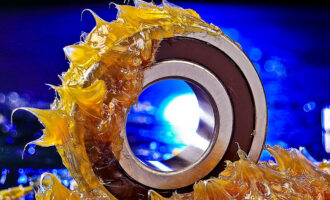Fixing the fuel-economy gap
By Hank Hogan
In-use fuel economy actually may be less than what’s claimed on your newly purchased car’s sticker. Indeed, the gap between test-and road-fuel economy appears to be growing. According to the international council on clean transportation (CCT) based in Washington, D.C., the deficit in Europe has risen from 8% in 2001 to 38% in 2013. This gap means that vehicle owners will end up paying EUR 450 (USD 570) more in fuel costs every year, the Brussels-based environmental advocacy organisation, transport & environment, estimates.
“Only half of the measured CO2 improvement is actually being realized on the road. So this is already a very serious issue. Regulations and customers are being cheated. If the gap between test and real world continues to grow, the regulations will be totally devalued,” said Greg Archer, clean vehicles manager at Transport & Environment.
With regards to fuel economy testing, what happens in Europe affects other regions. According to a 2014 report from the Global Fuel Economy Initiative (GFEI), the European approach forms the basis for the test cycle in China and is the foundation for proposed regulations in India. Hence, issues with the New European Driving Cycle (NEDC) test could impact two of Asia’s largest economies.
Not all countries use the NEDC. Japan, for example, has its own test, the JC08. South Korea and Brazil, two fast-growing economies, use the U.S. combined test cycle, as does Mexico and Canada. Lab and in-use fuel economy data are better matched using the U.S. combined test cycle than Europe’s. In recent road testing, Consumer Reports, an independent organisation, found that cars sold in the U.S. had a fuel economy deficit of less than 10%. That is, the actual, in-use fuel efficiency was within 10% of lab test results, the basis of the vehicle label. At the joint U.S. Department of Energy (DOE) and Environmental Protection Agency (EPA) website, www.fueleconomy.gov, consumers can enter data from their real world driving results. The data is reviewed and compared against lab test results. According to Jeff Alson, senior policy advisor at the U.S. EPA’s Office of Transportation and Air Quality, the lab results and in-use data are close.
“ The average fuel economy reported through this tool is slightly higher than the corresponding label values for recent model years. Recent analyses by AAA (American Automobile Association) and the Wall Street Journal also concluded that, on average, most consumers are achieving, or slightly exceeding, their label fuel economy values,” he said.
The average fuel economy reported through this tool is slightly higher than the corresponding label values for recent model years. Recent analyses by AAA (American Automobile Association) and the Wall Street Journal also concluded that, on average, most consumers are achieving, or slightly exceeding, their label fuel economy values,” he said.
For the 2008 model year, the EPA modified its tests to achieve this. Prior to this time, the gap was larger. The EPA’s spot sampling of vehicles also has identified and enabled problems to be corrected. For instance, EPA forced car makers Hyundai and Kia, both from South Korea’s Hyundai Group, to lower their stated fuel economy claims on some 2012-2013 models by as much as 17%.
Although the size of the gap between test and actual fuel economy varies, a shortfall could be explained by three factors: The first is driver behaviour. Rapid acceleration and high speeds, for example, lead to greater fuel consumption. The second factor is that electronics, such as entertainment, navigation, air conditioning and communication systems, consume fuel without actually making a vehicle move. Hence, they reduce fuel economy and boost CO2 emissions. The third factor is the environment. Weather, traffic conditions and terrain all affect fuel economy.
The exact weight of these factors is being debated. For instance, the fuel efficiency impact of powering on-board electronics is growing. Gerd Preuss is the Brussels-based technical director for Region 1 of the Federation Internationale de L’Automobile (FIA), which is comprised of more than 235 motoring and motor sport clubs in more than 140 countries. Every 100 watts (W) of electrical power consumes about a tenth of a litre of fuel per 100 kilometres of travel, Preuss said. There are several common systems that surpass this power threshold. For example, front windshield heating consumes 540W, rear window heating gobbles 185W and seat heating requires 100W.
“Accessories have a significant impact on fuel consumption,” Preuss said.
In the current European test cycle, all accessories are switched off. That alone can explain part of the widening fuel efficiency gap between lab and road results. Tests done with lights and air conditioning systems switched on while running at highway speeds of 130 kilometres per hour have shown fuel economy reductions in the NEDC results. These reductions range from about 10% for a standard gasoline engine to 25% for hybrids, with the latter possibly higher because there’s no stop-start.
The NEDC test provides for a high level of idling, where stop-start technology brings the most benefit. Small engines tend to get a bigger boost in fuel economy during the test than large engines, said Preuss.
Some vehicle makers consider the impact of the driver and the environment to be significant. Driver behavior accounts for about half of the fuel economy gap, according to a presentation from the Japan Automobile Manufacturers Association (JAMA) at a GFEI meeting in London in July 2014. That is the largest contributor to the shortfall, with another 30% from on-board electronics equipment and 20% from environmental factors.
“Fuel-efficient driving, or ‘eco-driving’, can significantly reduce fuel consumption and lower CO2 emissions. Slight changes in driving style enable drivers to fully exploit the fuel-efficiency potential of modern technologies,” said Erik Jonnaert, secretary-general of the European Automobile Manufacturers’ Association (ACEA).
Not everyone agrees that drivers are primarily responsible for the difference between lab and in-use fuel economy results. To standardise testing and compare different vehicles and model years, fuel economy evaluations are done under controlled conditions that eliminate external factors. Vehicles undergo pre-determined testing profiles. Accelerations, cruising speeds, decelerations, loads and other aspects are set. Importantly, test conditions are fixed with varying amounts of flexibility. Carmakers could, therefore, adjust their vehicles inadvertently or deliberately to make them look better in the lab.
There are some indications that this may be happening. Data from Europe shows that the fuel economy deficit jumps when a new model generation is introduced, said Peter Mock, managing director of ICCT Europe. He noted that in 2010, Volkswagen introduced a new generation of the Passat. Data collected from consumers showed the fuel economy gap grew from less than 10% to more than 30% with the new model. Furthermore, evaluation of the 26 top-selling vehicles in Europe showed that since 2009 the shortfall has increased from 18 to 29% with the introduction of new models. It’s unlikely that driver behavior or other external factors significantly changed in a year, said Mock.
“This finding points to the fact that it is mainly changes in technology – for example the introduction of stop-start technology which is known to have a higher fuel-saving effect in the driving cycle than in real life – and manufacturers are increasingly making use of flexibilities in the test procedure that explain the increasing gap,” he said. Transport & Environment’s Archer said his organisation has conducted its own research and has found that manufacturers over inflate tires, adjust wheel alignment and brakes, use special lubricants and minimize vehicle weight. He added that they test at altitude, high temperature or on ultra-smooth road surfaces. Exploiting such loopholes in the test procedure allows carmakers to artificially inflate fuel economy figures, he said.
When asked about any gaming of the system by carmakers, ACEA’s Jonnaert responded, “The current test system is laid down by existing regulations, and all manufacturers test vehicles according to the laws in force.”
Looking to the future, there are several proposals to minimise the gap between test and in-use fuel economy. One is the Worldwide Harmonised Light-Vehicle Test Procedure (WLTP). This features a more dynamic test cycle and tighter procedures than the current European test. This new test is due to be implemented on new cars in Europe in 2017.
Carmakers are helping develop the new test and look forward to its implementation with the hope that it will better reflect realdriving situations than does the current test, according to Jonnaert. However, details are still being worked out.
“The new WLTP test procedure needs to be completed properly so that it can be a robust tool for comparing one vehicle against another and so that it can be applicable for all future technologies that manufacturers continue to develop for helping to reduce CO2 and improve fuel consumption,” Jonnaert said.
Other ideas aim to overcome the fact that evaluations under controlled conditions, no matter how sophisticated, may differ from actual in-use fuel economy. For instance, FIA plans to collect road fuel economy information through the use of data logging techniques. Eventually, this will be done for the top 10 vehicles in each European country; the data will supplement lab-generated information. A pilot data collection project was originally scheduled to begin in October 2014. However, FIA is still searching for partners to support certain aspects of the project, said Preuss.
Transport & Environment’s Archer listed three areas where improvement must be made. First is that approval and testing services need to be genuinely independent of carmakers. Second is that stronger checks are needed to ensure vehicles sold can indeed achieve the stated performance. The third area is the introduction of new and better tests, such as the WLTP. Closing the fuel economy gap can’t be accomplished with only one set of changes, he said. “There’s no silver bullet,” he added.
echo '






